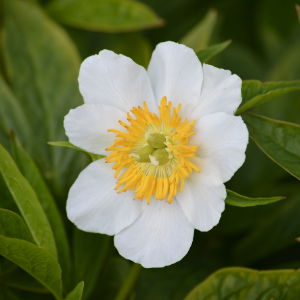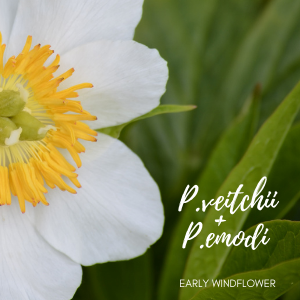Wouldn’t a trip to Hawaii be good round about now?
To feel that warm water and soft, white sand on the feet while smiling into clear, 25°C blue skies...
Sigh...
Ok, torture over.
Until we get there, let’s bring a bit of that dream into the garden with the lovely peony ‘Pink Hawaiian Coral’.
The blooms start out rose-coral pink fading to apricot, then cream and at times all three shades can be present at once. These warm, sunset shades set against dark green foliage makes this early mid-season semi-double peony striking. It’s a great one to have in the border near a path so the subtle fragrance can be enjoyed. Registered by Roy G. Klehm in 1981, ‘Pink Hawaiian Coral’ became an APS Gold Medalist in 2000 and took home an Award of Landscape Merit in 2009.
This herbaceous perennial reaches 90cm in height making it a good cut flower.
As we know, all peonies are perennials.
But what exactly is a perennial? And what’s so great about them?
What is a perennial?
Perennial stems die down in the winter so they have a shorter growing season, typically flowering for only one season each year. Regrowing every spring for 3 years or more, they make a fantastic foundation in the garden.
Why have them?
Some reasons are:
- Although you may spend a bit more on them initially, they can live for a very long time so are worth every penny
- They can be propagated by division or reseeding – more free plants in your garden or to gift on to friends!
- They are cold-hardy
- Perennials tend to require less water and care after they’re established
- A little pruning/dividing keeps them neat and growing vigorously, but some can be left to their own devices, often thriving on neglect
- No matter what your specific garden conditions are – shady, dry, plagued by deer - there’s a perfectly suited perennial out there for you
- They do well in pots and once they outgrow them they’ll happily go in the garden
- Those that aren’t quite suited to your winter climate can be put back in a pot indoors to stay cosy during winter
- Planting perennials that are native to your region creates a welcoming habitat for pollinators and local wildlife
- They provide a long term service to your garden’s ecosystem – pollinators tend to stick around and multiply where the food source is sustainable and thus consistent
- Planting perennials with staggered bloom times provides an ongoing bounty for these creatures
- Veggie patches and fruit trees do better when surrounded by perennials as they are more likely to be pollinated
So why not try some Hawaii? Peonies are star perennials and ‘Pink Hawaiian Coral’ is just one of hundreds to choose from.
With our end of season sale now on you could try a few with different blooming times.
That way you and all the other creatures and plant-life in your garden can enjoy the wonderful benefits throughout the season.














